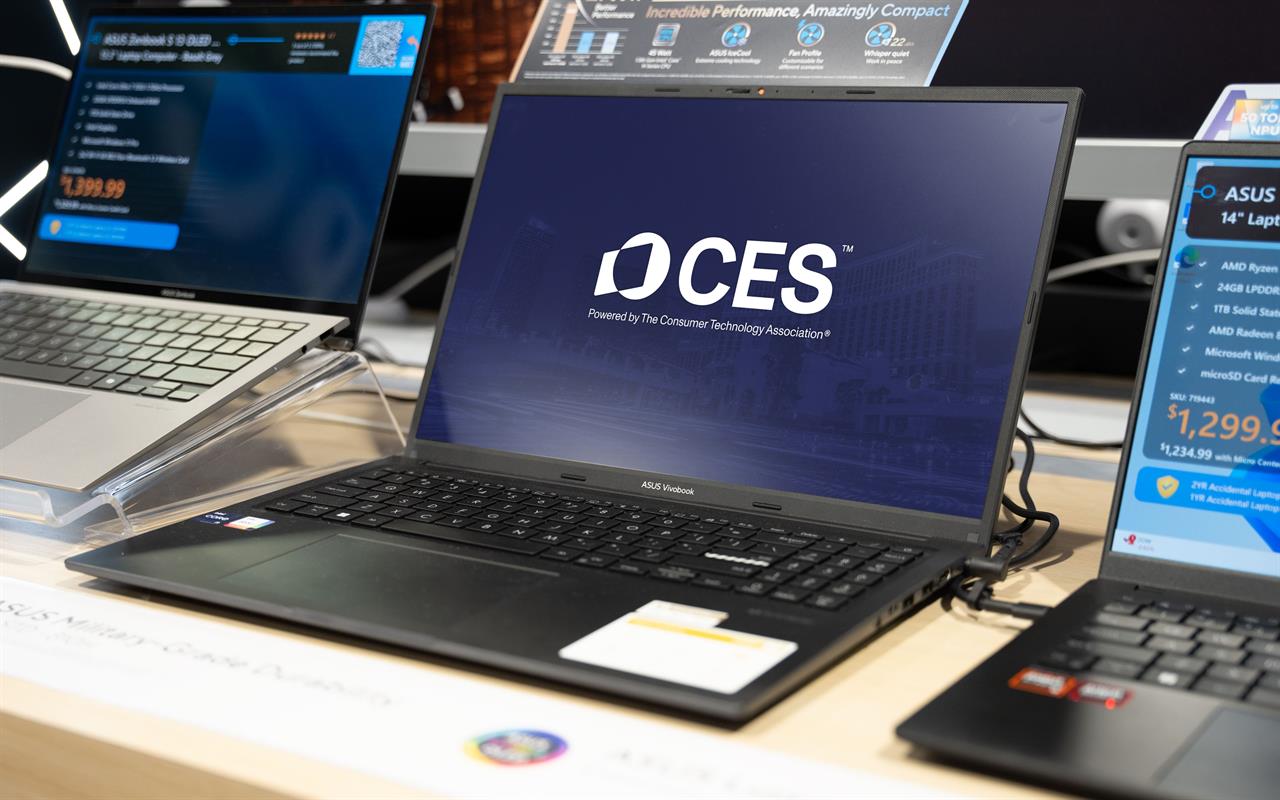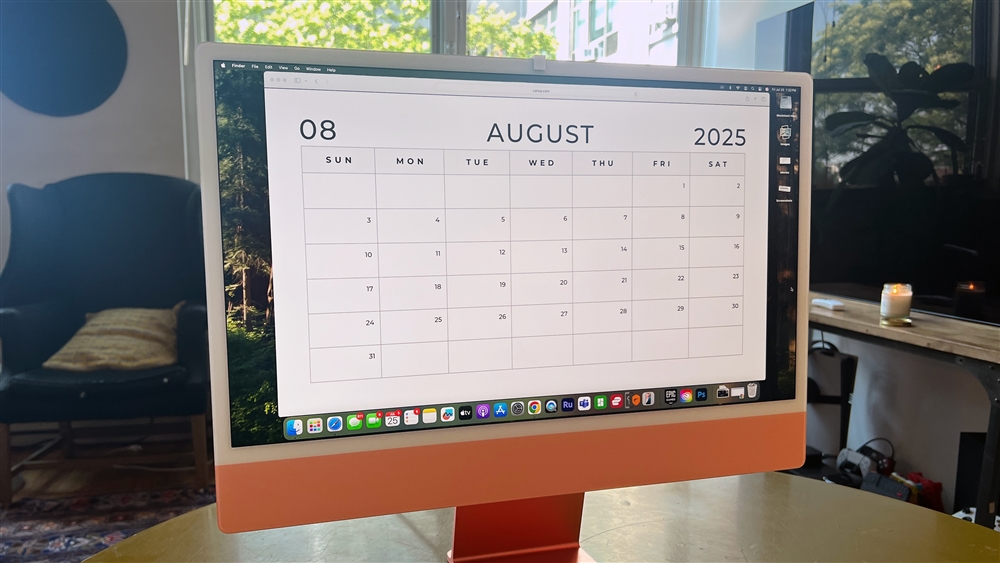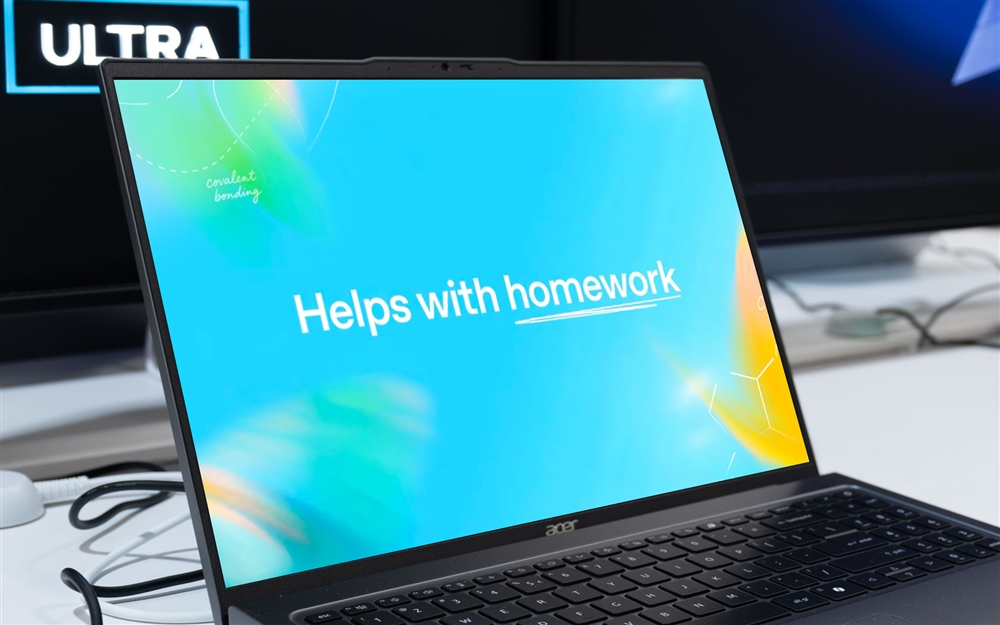What to Expect from AI and PCs at CES 2025
These trends will set the stage for transformational tech in the new year and beyond.News
 Image: Jacob Bobo
Image: Jacob BoboFrom Windows apps to word processing, Google search results to graphic design, 2025 will be the year that artificial intelligence truly hits critical mass in terms of mainstream awareness and adoption. AI PCs are expected to account for 43% of worldwide computer shipments in 2025 and AI laptops poised to be the primary choice available for businesses by 2026, per market research firm Gartner.
Watching so many computing hardware and accessory manufacturers now giving countless devices a smart overhaul, it’s effectively a foregone conclusion. Working professionals (including both remote and hybrid staffers), small business owners, and PC power users of all stripes would do well to give desktop and notebook systems an upgrade as well.
Mind you: You’ve probably heard the hype before… and seen enough pictures of smiling, six-fingered families making the rounds on social media to give Generative AI the side-eye by now. But like I often remind even the most vocal naysayers to keep in mind: Today’s artificial intelligence technology (which is constantly improving by leaps and bounds) is the worst it will ever be. Moreover, with so many companies from Amazon and Microsoft to Meta, Qualcomm, and Apple investing in smart solutions, it’s clear that the industry has already cast its vote in favor of large language models (LLMs) and machine learning innovation.
In other words, change is coming to your computer: The only question is when, not if, you plan to get on board. Moreover, you need look no further than this year’s Consumer Electronics Show (CES) to already see a tidal wave of disruption headed our way.
Thankfully for those looking to surf that wave, rather than get left behind by or carried along by its currents, there’s no time like the present to give your setup an AI-ready makeover. Let’s take a closer look at how PC hardware is evolving and what this year’s CES and the coming months ahead will bring.
Computing in 2025: A Sneak Peek at CES and Beyond
From communications and productivity to creativity and gaming, computing’s heavy hitters are anticipated to be trotting out all manner of noteworthy new products and enhancements in the year ahead. For instance:
-
Microsoft continues to roll out an ever-expanding range of Copilot+ PCs in partnership with manufacturers like Lenovo, HP, Dell, Samsung, Acer and Asus. Leveraging AMD Ryzen AI 300 Series, Snapdragon X Series, and Intel Core Ultra 200V Series neural processing units, systems promote greater speed in AI applications and more streamlined app performance. There's a good chance we'll see a major update or new version of Windows drop later in 2025 to boot, bringing with it many AI-specific operating system enhancements as well.
-
NVIDIA is expected to showcase its next-gen series of graphics cards, whose enhanced muscle should underpin more generative artificial intelligence applications. A keynote by company CEO Jensen Huang will likely also emphasize how the company will partner with a growing range of manufacturers to bring new levels of awareness to all your favorite categories of smart home devices, not just home computers.
-
Intel is doubly down on its “AI everywhere” philosophy, with rumors that more Battlemage GPUs will make an appearance at the event. New Core Ultra 200T and budget-priced Arrow Lake CPUs are expected as well, and may soon appear everywhere from desktops and laptops to handheld gaming systems and even cars.
-
AMD plans to tease its new AMD Strix Halo CPUs, packing in a custom neural processor unit, and its next-gen RDNA 4 architecture-based GPU lineup. That means a host of fresh AI-ready PCs and laptops that utilize the firm’s hardware should be around the corner as well.
-
Qualcomm plans to push its Snapdragon 8 Gen 3 mobile platform for generative AI on the go, which you’ll find coming to an assortment of devices shortly. The tech giant is also expected to roll out new Hexagon NPU and Snapdragon X Elite offerings, primed for helping laptops and notebooks better manage large language model tasks and power more secure AI experiences.
What Artificial Intelligence Means to You in Practice
As for what all sorts of AI-related advancements mean for users in practical terms, it effectively suggests that:
-
Work computers will demand new upgrades to handle AI-powered productivity tools for tasks like real-time document analysis, digital twinning, tapping virtual assistants for advice, generating images on-demand, and intelligent data visualization. PCs can clearly benefit from more powerful CPUs and NPUs and dedicated AI graphics accelerators. The integration of AI-powered security features will also require specialized hardware components to monitor and protect sensitive data in real-time.
-
Hybrid and work from home employees will see AI interwoven through virtually every facet of the work they do. For instance: Videoconferencing systems will incorporate AI-powered background removal, noise cancellation, and real-time translation, requiring more sophisticated neural processing units (NPUs) in laptops and desktop computers. Also, the rise of AI-enhanced creative tools will push employees to invest in systems with more dedicated graphics cards capable of handling both traditional graphics workloads and AI model processing.
-
Power efficiency will become even more crucial as AI features become standard in everyday computing tasks. Systems will growingly need to balance performance with energy efficiency, leading to innovations in cooling technology and power management.
-
Memory requirements will also see a significant uptick, with 32GB becoming the new standard for professional needs. Storage solutions will also evolve, with new architectures optimized for AI workloads featuring enhanced data transfer speeds and improved cache systems.
-
Security-focused hardware components should become standard, with dedicated processors handling AI-powered threat detection and real-time system monitoring.
In terms of how AI capabilities might benefit professionals in a variety of disciplines and fields from a day-to-day, practical standpoint, consider as follows as well:
Document Management: Working pros will experience instantaneous document translation, summarization, and formatting. For instance: A professional reviewing a 100-page report can receive an accurate summary in seconds and immediately identify key findings at a glance with AI hardware processing the document locally for enhanced security.
Email and Communication: AI processors will help draft contextually appropriate responses, automatically prioritize messages, and detect potential miscommunications before sending – all of which will happen in real-time without cloud dependency.
Research and Analysis: Staffers will be able to process and analyze large datasets locally, with AI hardware enabling instant information visualization and pattern recognition. For example, a researcher or business analyst could (theoretically) analyze years of consumer data in minutes rather than hours.
Time Management: Also keep in mind that AI-enabled systems will provide intelligent scheduling and staffing assistance, automatically managing calendar conflicts and suggesting optimal meeting times based on participants' work patterns and energy levels.
Videoconferencing: Virtual meeting spaces will become more immersive and remote workers will experience more natural interactions through AI-powered gesture recognition and emotion detection, all processed locally for minimal latency. Real-time background manipulation, automatic framing, gesture recognition, and simultaneous translation will require dedicated processing power, pushing manufacturers to develop more capable integrated solutions for laptops and desktop computers.
Graphic Design: Graphic designers and video editors will see dramatic improvements from AI-accelerated hardware. For instance, a video editor will be able to automatically transcribe, translate, and caption videos in real-time while simultaneously generating B-roll footage suggestions. Photographers will benefit from instantaneous photo enhancement and style transfer capabilities running locally on their machines, eliminating the need for cloud processing and reducing costs.
Overall, you could argue that benefits will be enabled by a variety of hardware improvements, e.g.:
-
Dedicated neural processing units (NPUs) with 32+ TOPS of processing power
-
Enhanced memory architectures supporting 64GB+ RAM with optimized AI data paths
-
Specialized AI hardware solutions for specific tasks like natural language processing and computer vision
-
Advanced thermal solutions allowing sustained AI workloads without throttling
-
Integrated security processors for protecting sensitive AI model data
Clearly, the transition to AI-ready hardware represents a significant leap forward in professional computing capability, especially in terms of what’s now available to the everyday end-user. By processing AI workloads locally, working professionals will benefit from enhanced privacy, reduced latency, greater computer performance, enhanced interactions and lower operating costs. The new year’s hardware should create new benchmarks and standards for productivity and creativity across all professional sectors, making 2025 a transformative time for computing.
In effect, it’s obvious that as AI becomes more integral to everyday needs and daily computing tasks, the hardware industry will only continue to adapt. And that’s before one even starts to consider new categories of devices and computing paradigms that are optimized for a smarter, more responsive future.
Fun fact: I bought my first computer at Micro Center. As a futurist who’s tickled by all the possibilities that this new computing hardware opens, I’m absolutely thrilled to see just how many folks are swinging by stores to pick up their first AI PC as well.
Read more: AI Tools and Tips
- What is Meta AI? A Capable Chatbot That’s 100% Free
- Hands-on with ChatGPT o1-preview, OpenAI's Latest Innovation
- How to Get Started with Copilot for Microsoft 365
- Getting started with LM Studio: A Beginner's Guide
- Meet Claude, the Best AI You've Never Heard of
- How to Get NVIDIA Chat with RTX: Local AI for Everyone
Futurist keynote speaker and strategy consultant Scott Steinberg is the author of 30 books on trendspotting, innovation and business strategy. A thought leader and strategic advisor for 2500 brands, recent works include Fast Forward: How to Turbo Charge Business, Sales and Career Growth and Think Like a Futurist. You can contact him at www.FuturistsSpeakers.com










